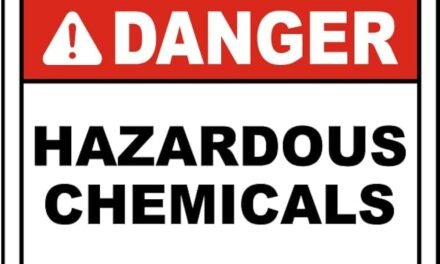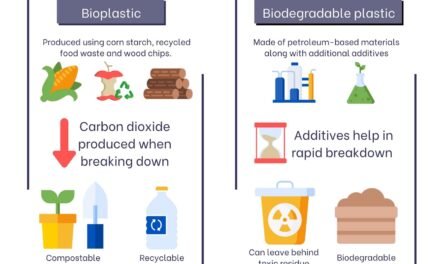Handling industrial gases involves significant safety concerns due to their physical and chemical properties, such as flammability, toxicity, corrosiveness, and pressure. Proper management and adherence to safety protocols are essential to mitigate risks and ensure worker and environmental safety. Here’s an overview of the key safety concerns and measures related to industrial gases:
1. Common Hazards Associated with Industrial Gases
- Flammability and Explosiveness:
- Gases like hydrogen, methane, acetylene, and propane are highly flammable and can ignite under certain conditions.
- Risks:
- Fires and explosions due to leaks or improper storage near ignition sources.
- Toxicity:
- Exposure to toxic gases like chlorine, ammonia, carbon monoxide, or hydrogen sulfide can cause severe health issues or fatalities.
- Risks:
- Inhalation poisoning, respiratory damage, or asphyxiation.
- Corrosiveness:
- Gases like chlorine and sulfur dioxide are corrosive, damaging equipment and posing risks to skin and eyes.
- Pressure Hazards:
- Compressed gases are stored under high pressure, making cylinders prone to rupture or explosion if mishandled.
- Asphyxiation:
- Inert gases like nitrogen, helium, and argon can displace oxygen in confined spaces, leading to suffocation.
- Cryogenic Risks:
- Extremely low temperatures of liquefied gases like liquid nitrogen or oxygen can cause frostbite or cold burns.
2. Specific Safety Concerns
- Improper Storage:
- Storing incompatible gases together can lead to chemical reactions (e.g., oxidizers with flammables).
- Cylinders improperly secured can tip over and become projectiles.
- Transportation Hazards:
- Leaks or accidents during transport can result in dangerous spills or releases.
- Leaks and Spills:
- Undetected leaks can lead to toxic exposure, fires, or explosions.
- Improper Equipment Use:
- Using non-compatible materials or damaged regulators, valves, or hoses can result in gas release or failure.
- Training Gaps:
- Lack of proper training for workers handling industrial gases increases the likelihood of accidents.
3. Key Safety Measures
- Proper Storage:
- Store cylinders upright and secure them with chains or brackets.
- Separate flammable gases from oxidizing agents by at least 20 feet or a fire-resistant barrier.
- Ensure adequate ventilation in storage areas to prevent gas accumulation.
- Leak Detection:
- Use gas detectors or soap solution tests to identify leaks.
- Regularly inspect cylinders, hoses, and connections for wear or damage.
- Labeling and Identification:
- Ensure all cylinders are clearly labeled with their contents and associated hazards.
- Follow color-coding systems and safety data sheets (SDS) for handling instructions.
- Pressure Management:
- Use pressure regulators compatible with the gas and avoid overpressurizing systems.
- Personal Protective Equipment (PPE):
- Provide appropriate PPE, such as gloves, goggles, face shields, and respirators, depending on the gas type.
- Training and Awareness:
- Conduct regular training on gas handling, storage, emergency response, and first aid.
- Cryogenic Handling:
- Use insulated gloves and face protection when handling cryogenic liquids.
- Avoid direct contact with cryogenic containers or surfaces.
4. Emergency Preparedness
- Spill and Leak Response:
- Evacuate the area and use gas-specific procedures to address leaks (e.g., shutting off valves, ventilating the area).
- Fire Safety:
- Use appropriate fire extinguishers (e.g., CO₂ for electrical fires, dry chemical for flammable gas fires).
- Avoid using water on reactive gas fires.
- First Aid:
- Provide immediate medical attention for gas exposure or injuries, including oxygen therapy for asphyxiation.
- Evacuation Plans:
- Develop and practice emergency evacuation protocols for potential gas leaks or accidents.
5. Regulatory Compliance
- Occupational Safety Standards:
- Comply with OSHA (Occupational Safety and Health Administration) standards for gas handling and storage.
- Follow NFPA (National Fire Protection Association) guidelines for flammable and oxidizing gases.
- Transport Regulations:
- Adhere to DOT (Department of Transportation) or ADR (Agreement concerning the International Carriage of Dangerous Goods by Road) regulations for gas cylinder transport.
- Labeling and Documentation:
- Maintain up-to-date safety data sheets (SDS) and ensure proper labeling for all gases.
6. Advances in Safety Technology
- Smart Gas Detection Systems:
- IoT-enabled sensors and detectors monitor gas concentrations and provide real-time alerts.
- Automated Shut-Off Systems:
- Valves that automatically close in response to pressure or temperature anomalies.
- Robotic Handling:
- Use of robots for transporting and manipulating gas cylinders in high-risk environments.
- Improved Cylinder Designs:
- Lightweight composite cylinders with enhanced safety features reduce the risk of rupture.
7. Common Applications and Associated Risks
- Welding and Cutting:
- Use of flammable gases like acetylene requires strict control to prevent flashbacks and explosions.
- Medical Use:
- Oxygen cylinders pose fire hazards in healthcare settings.
- Laboratories:
- Handling reactive gases like hydrogen or ammonia requires specialized safety protocols.
Conclusion
Handling industrial gases safely is crucial to prevent accidents, injuries, and environmental harm. By following strict safety protocols, using appropriate equipment, and providing regular training, risks can be significantly reduced. As industries adopt advanced technologies and regulatory frameworks, the safe handling of industrial gases will continue to evolve, ensuring safer workplaces and communities.
Hashtags
#IndustrialGasSafety #GasHandlingSafety #SafeIndustrialGases #GasSafetyStandards #IndustrialGasesRisksandConcerns#HazardousMaterials #GasLeakPrevention #FireAndExplosionRisks #ToxicGasHazards #IndustrialSafetyConcerns #SafetyFirst #SafeGasHandling #WorkplaceSafety #PPEForGases #EmergencyPreparedness #SafetyTraining #IndustrialSafetyTraining #GasSafetyAwareness #EmployeeSafety #HazardAwareness #GasSafetyTech #SmartSafetySolutions #GasDetectionTech #AutomationForSafety #InnovativeSafety #SafetyRegulations #WorkplaceCompliance #OSHASafety #IndustrialSafetyStandards #RegulationsInIndustry

















